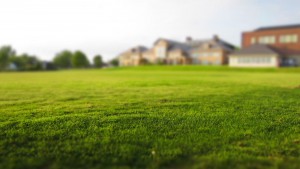Watch Your Lawn ‘Go Green’ With Organic Lawn Care
 There has been increasing concern among homeowners and businesses about the type of materials used to cultivate desirable green spaces. However, there is also a lack of true understanding of just how much current practices are out of sync with natural practices that could truly provide the lush, fertile, well-maintained lawns that are sought. This is being recognized by many lawn care companies, which are moving toward organic and sustainable practices, as well as educating their customers on how to implement them.
There has been increasing concern among homeowners and businesses about the type of materials used to cultivate desirable green spaces. However, there is also a lack of true understanding of just how much current practices are out of sync with natural practices that could truly provide the lush, fertile, well-maintained lawns that are sought. This is being recognized by many lawn care companies, which are moving toward organic and sustainable practices, as well as educating their customers on how to implement them.
Organic practices, at minimum, require proper pruning, watering, seeding, aeration, and plant selection. The foundation of this practice involves testing your soil, a critical first step in organic lawn care. For this step, you will need the assistance of a professional. The purpose of soil testing is to determine the pH of your soil, which will let you and the professional assisting you know if your soil is healthy enough to resist weeds and pests, if it is ready for planting and growing lush grasses, and if it has the minerals it needs. Whatever specific nutrition is required for the soil can now be selected based on those tests, as opposed to loading your lawn up with fertilizers that could be harming the earth without benefiting your lawn.
Other problems can also be addressed. Aeration, which reduces water waste, is commonly a part of the process to make sure that water is adequately reaching the root beds of the grass and is not being blocked as a result of soil compaction or thatch growth. In addition, integrated pest management to ensure the removal of pests is a critical part of the organic process. For example, beneficial nematodes (natural micro-organisms), instead of harmful pesticides, can help control grub, weevil, or larva growth in the soil.
Homeowners who use organic lawn care practices typically end up with lawns that have stronger root systems and built-in defenses to guard against the summer stress that most lawns experience as a result of excessive shoot growth. These strengthened lawns often require less maintenance and sport a thick, beautiful, healthy appearance.
